Taking Cuttings for Propagation at Fresh Acres Nursery
The process for our in-house propagation team
Here at Greenwood Plants, our nurseries have been taking cuttings and propagating plants for many years. Over time, we have increased our propagation area to allow for growing demand and to help us achieve our ambitious growth targets, and with our team preparing 900-950 cuttings per hour, this space is constantly filled with a variety of young plants. Taking cuttings and propagating are effective ways for growers to improve reliability and quality of stock, whilst reducing issues related to pests and diseases.
Fun fact:
Throughout 2022 we propagated an impressive 1,147,007 plants in total.
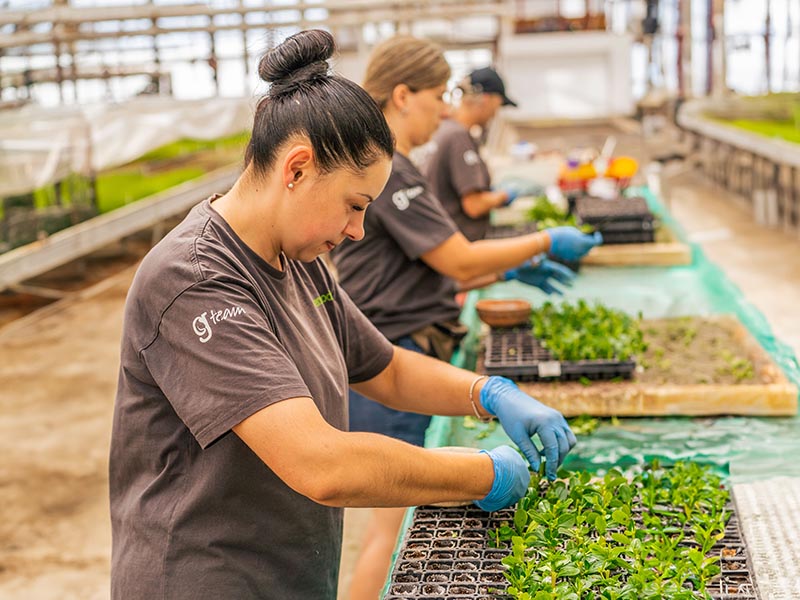
The process starts with our Production Planner, who provides a detailed list of plants which will need to be propagated, based on demand and the time of year. The next stage involves checking which sites the plant varieties are currently housed, and choosing the healthiest and best examples of our stock, as well as doing thorough checks to ensure they are pest and disease free. These plants will provide excellent cutting material for strong and healthy plants for the future. Depending on which plants are required, each nursery has a dedicated team who collects the required plant materials and organises transportation to Fresh Acres nursery.

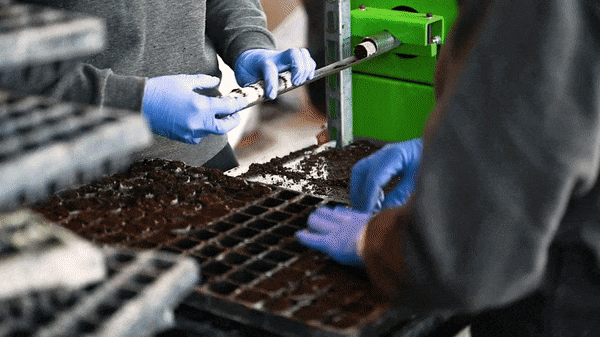
The time of year is an important factor to consider for plant cuttings, as all plants have a specific calendar we work to. Some plants have an optimum time of year in which cuttings are taken, and therefore, have higher success rates when propagated at this time. For example, Geranium, Salvia, and Verbena can have cuttings taken from late spring to early autumn, whilst Abelia, Hydrangea, and Viburnum, can have cuttings taken during the cooler months of late autumn to early spring.
Once our Propagation Team receives the plant materials from our various nurseries, they select the plants to take cuttings from. Our best practice methods ensure cuttings are taken from an area where the middle of the stem is not too hard or too soft. Cuts are made below one leaf bud, and another above a second leaf bud. Specific equipment and tools are required for taking cuttings, and the G Team always adhere to hygiene best practice guidelines to ensure their tools are clean at all times. A pair of sharp pruning secateurs with a pointed end are ideal for making these cuttings, and small hedge trimmers are used for plants which are larger in size. Once the cuttings have been made, they are then stored at a lower temperature to keep them fresh for up to two hours, until they go on to be prepared in our standard trays of 126.Whilst the cuttings are kept fresh, our “Plant Paper” machine is busy creating small plugs of compost for our plant cuttings to be inserted into; read more about this process in our Propagation and Production of 28 Trays blog post.
Plugs are very sensitive to their environment, and any cold and damp conditions can lead to lower success rates and disease. Once they start to grow roots, the humidity level can be reduced to around 80 to 90%. As the compost dries, this gives the roots a good chance to develop further. Many plants root effectively on their own; however, plants with woodier stems or trunks, or those which are being propagated during the winter months can benefit from a root hormone, which we use in these instances. Root hormones can help to increase the chance of root initiation, as well as improve the speed and strength of the roots.
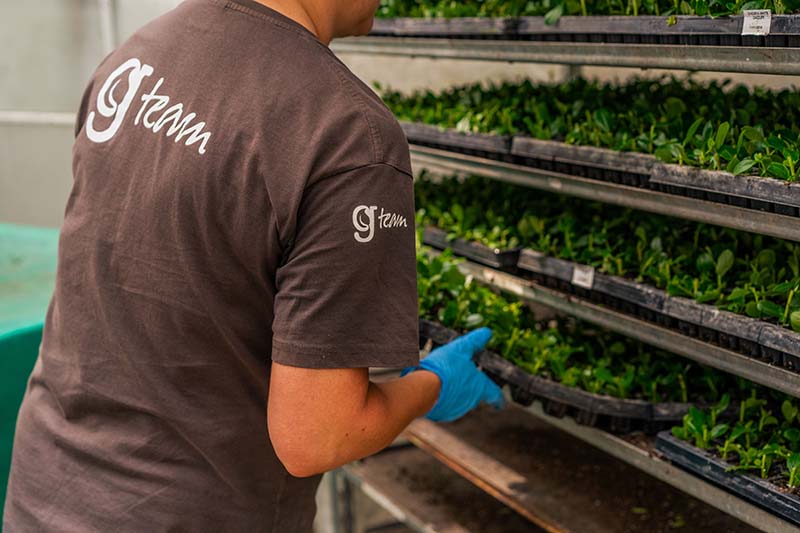
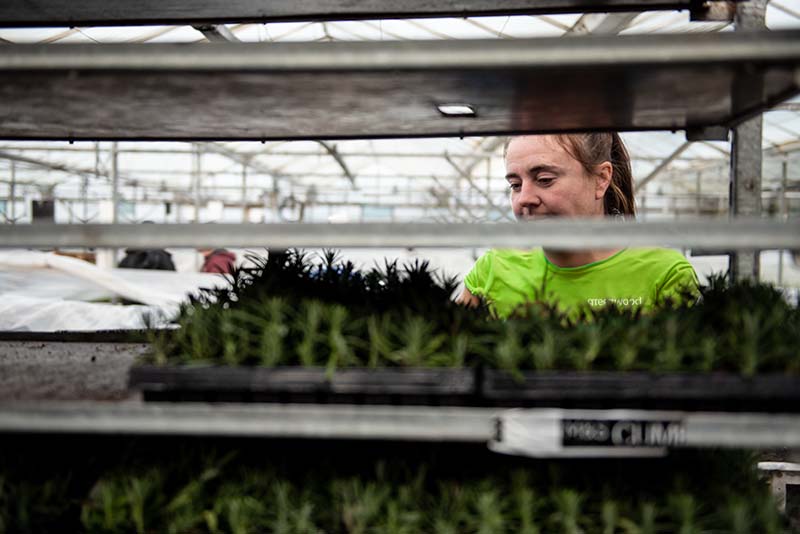
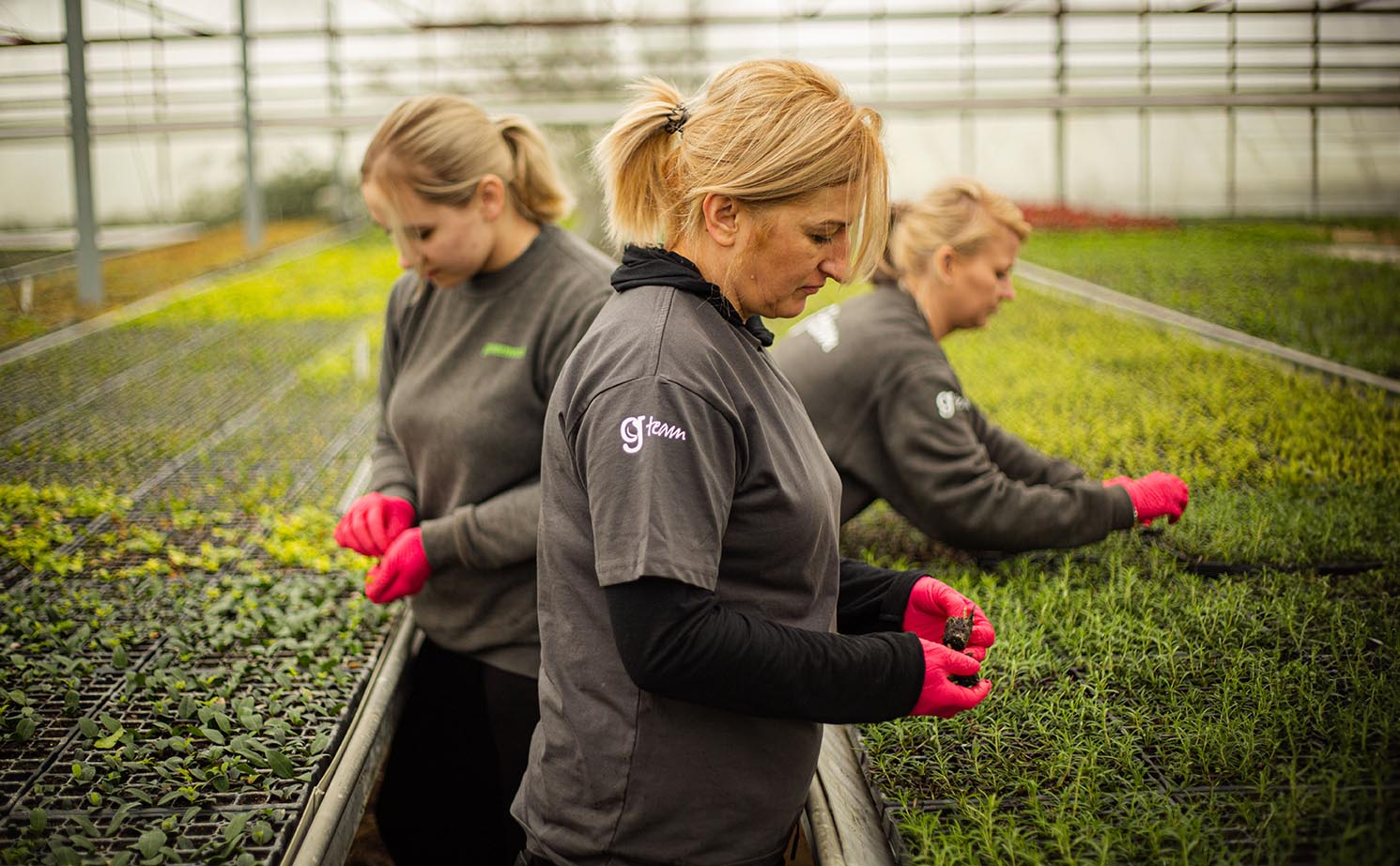

Once the newly propagated plants are ready, they are then transitioned into 28 trays. During spring and summer, this usually takes around six weeks, but in autumn or winter, it can take around eight to ten weeks. This timeframe can also change depending on the plant species, as Verbena and Vinca only need around two to three weeks, whilst Pittosporum requires around ten weeks before it can be transitioned into 28 trays.
The expansion of our propagation area is an important element in helping us to provide an effortless client service. Our increased capacity to grow high quality plants is a key factor for the delivery of our contract growing service, Watch It Grow, where clients can pre-select their plant varieties and quantities, within a specified timeframe.
Contact the G Team today to arrange a tour of our growing facilities, state-of-the-art machinery, and dispatch hub, to see the whole process from propagation to dispatch.

